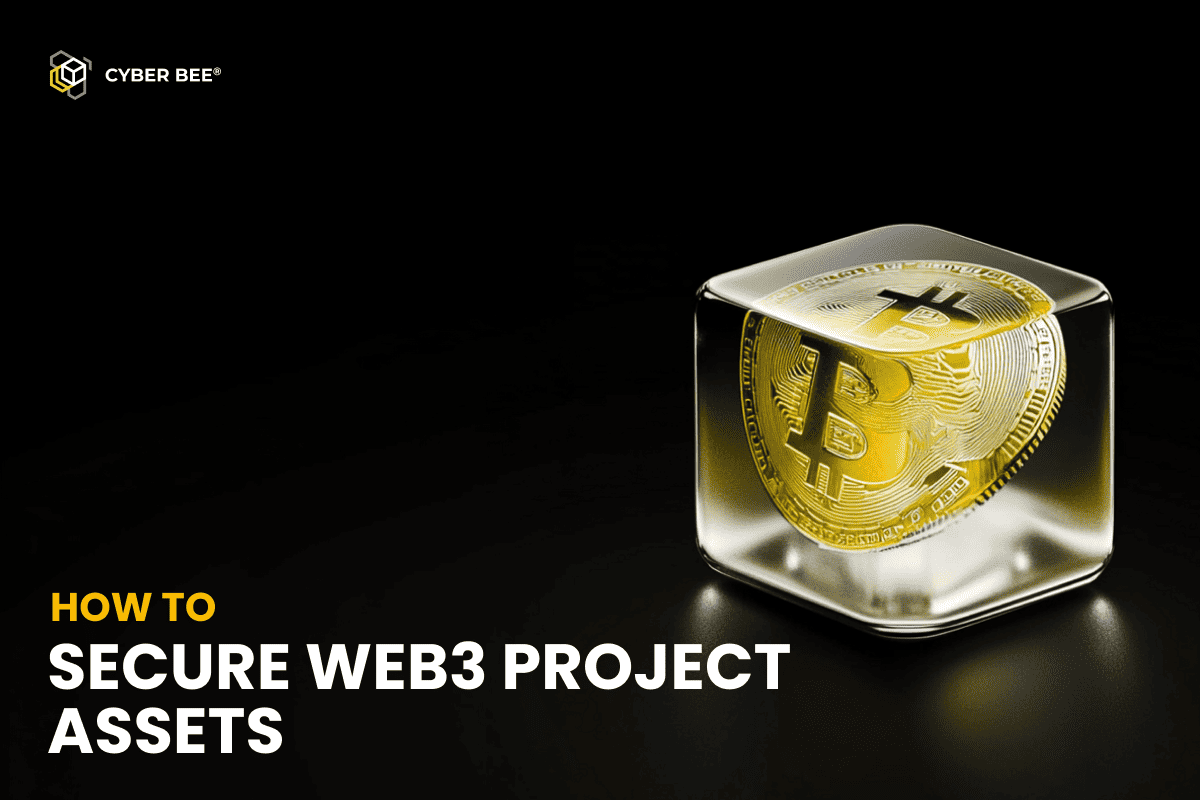Understanding Cryptocurrency Transactions: Secure Transfers in a Decentralized World
The world of finance is undergoing a digital revolution, with cryptocurrency at the forefront. But how can these digital currencies function securely without a central bank? The answer lies in a revolutionary technology called blockchain. This blog post dives into the fascinating world of cryptocurrency transaction verification, exploring how blockchain technology underpins the secure and transparent transfer of digital assets.
What is a Blockchain Network in Easy Terms?

Source: Freepik
Imagine a giant shared spreadsheet, accessible to everyone on the internet. This spreadsheet isn’t stored on a single computer; instead, it’s copied and synchronized across a vast network of computers called nodes. Every change made to the spreadsheet, which tracks cryptocurrency transactions on a blockchain network, is recorded chronologically. This record of transactions is called a distributed ledger technology (DLT), and everyone on the network can see these updates in real-time, ensuring transparency. That’s essentially the core concept of a blockchain!
In this analogy, each row in the spreadsheet might represent a bitcoin transaction or a transaction on a different cryptocurrency network like Ethereum. These transactions aren’t just numbers; they include details like the sender’s and receiver’s wallet addresses, the amount of cryptocurrency coins transferred, and a unique digital signature to ensure legitimacy.
Each transaction is bundled together into a “block,” and these blocks are chained together in chronological order, creating a tamper-proof record. This chaining is achieved through a complex cryptographic mechanism called hashing. Here’s how it works:
The Power of Hashing: Guaranteeing Data Integrity
- Each block contains a unique code (hash) generated by a cryptographic hashing algorithm. This hash is like a fingerprint for the block, containing information about all the transaction data within it.
- The hash of a block also crucially includes the previous block’s hash. This creates a chain-like structure where every block points to the one before it. If someone tries to tamper with the data in a block, the hash would completely change, and this change would be reflected in all subsequent blocks. This makes it nearly impossible to alter the history of transactions on the blockchain without detection.
The process of adding new blocks to the chain and verifying transactions is generally secured by a decentralized system called consensus mechanisms. In some popular cryptocurrencies like Bitcoin, these mechanisms involve mining. Miners are special nodes on the network that compete to solve a complex mathematical problem. The first miner to solve the problem gets to add the next block (containing several verified transactions) to the chain and earns a reward in cryptocurrency. This competition among miners, along with the cryptographic hashing, makes it highly improbable for any single entity to manipulate the blockchain network.
There are other consensus algorithms besides Proof of Work (PoW) used by different cryptocurrencies. These algorithms can offer benefits like increased energy efficiency. By understanding these various mechanisms, you can gain deeper insights into the inner workings of the blockchain space.
Here are some additional points to consider:
- Not all computers can be nodes on a blockchain network. Some blockchains, like Bitcoin, require full nodes to download and store the entire chain, which can be quite large. Other blockchains use lighter client nodes that only store a subset of the data.
- Not all confirmations are created equal: The number of confirmations needed for a transaction to be considered final depends on the specific blockchain network. Think of confirmations like bricks stacked on top of each other. Each confirmation represents a new block added to the blockchain that confirms the validity of the transaction in the previous block. Generally, the more “bricks” (confirmations) a transaction has, the more secure it is considered.
- Transaction fees are sometimes used to incentivize miners or validators (depending on the consensus mechanism) to process transactions. These fees can vary depending on network congestion and the urgency of the transaction.
While there are some complexities involved with blockchain technology, understanding the core concepts like distributed ledgers, hashing, and consensus mechanisms can help you gain a solid foundation for exploring the exciting world of cryptocurrency and beyond.
The Multi-Step Process of Transaction Verification

Source: Freepik
Unlike traditional bank transfers, cryptocurrency transactions don’t involve central authorities like banks. Instead, they rely on a peer-to-peer network. Here’s a simplified breakdown of the core elements involved in a cryptocurrency transaction:
- Initiating the Transaction: When you want to send cryptocurrency coins (e.g., Bitcoin or Ethereum) to someone, you initiate the transaction using your cryptocurrency wallet.
- Transaction Information: The transaction details include the recipient’s wallet address, the amount of cryptocurrency you’re sending, and a transaction fee (optional on some networks).
- Digital Signature: To ensure the transaction originates from your account, you use your private key to create a digital signature. This signature acts like a cryptographic proof that only you, the owner of the private key, could have authorized the transaction.
Digital Signatures: Ensuring Authenticity in Blockchain Transactions
Imagine signing a document electronically. In the context of cryptocurrency transactions, digital signatures play a similar role, preventing unauthorized spending from your account. Each cryptocurrency wallet has a unique pair of cryptographic keys: a private key (like a secret password) and a public key (like a public address for receiving cryptocurrency). When you initiate a transaction, your wallet software uses your private key to cryptographically sign the transaction data, mathematically proving it originated from your wallet and hasn’t been tampered with. This signed transaction is then broadcasted to the network for verification.
Digital signatures are particularly important for ensuring the validity of transactions involving Smart Contracts. These self-executing programs rely on digital signatures to verify that the sender is authorized to interact with the contract and trigger its programmed actions.
Transaction Broadcasting: Sharing Information with the Network
Once you’ve signed the transaction, it’s time to broadcast it to the network. Here’s what happens:
- Broadcasting the Transaction: Your wallet software broadcasts the signed transaction to all the nodes on the blockchain network. This essentially means sharing the transaction information with everyone on the network.
Verification Process: Securing the Network
Now comes the crucial part – verifying the legitimacy of the transaction. Different blockchain networks use different mechanisms for this process, but the core goal remains the same: ensuring only valid transactions get added to the blockchain. We’ll explore two common verification methods:
Proof of Work (PoW): Decentralized Security Through Competition
Proof of Work (PoW) is the consensus mechanism used by Bitcoin and some other cryptocurrencies. Here’s a breakdown of how it works:
- Miners Compete: Special nodes on the network called miners compete to solve a complex mathematical puzzle. Solving this puzzle requires significant computational power.
- The Reward: The first miner to solve the puzzle gets to add a new block containing verified transactions to the blockchain and earns a reward in cryptocurrency. This competition incentivizes miners to participate in the verification process and secures the network.
- Validating Transactions: As part of solving the puzzle, miners validate the included transactions. This validation involves checking things like digital signatures, fees (if applicable), and ensuring the sender has sufficient funds.
Proof of Stake (PoS): A More Energy-Efficient Approach
Proof of Stake (PoS) is an alternative consensus mechanism gaining traction due to its lower energy consumption compared to PoW. Here’s a simplified explanation:
- Validators Instead of Miners: In PoS networks, validators are chosen based on the amount of cryptocurrency they hold (their stake). These validators are responsible for verifying transactions.
- Random Selection: Unlike PoW’s competition, validators in PoS are chosen probabilistically based on their stake. The more cryptocurrency a validator holds, the higher the chance of being chosen to validate a block.
- Security Through Stake: Validators have a stake in the network, so it’s not in their best interest to approve invalid transactions. If they do, they risk losing their stake as a penalty.
We’ll delve deeper into hashing and the consensus mechanism in the following sections.
The Role of Miners in Proof-of-Work Networks

Source: Freepik
In Proof-of-Work (PoW) networks, like the one powering Bitcoin, miners play a crucial role in securing the network and validating transactions. While some blockchains may utilize different mechanisms, PoW remains a cornerstone for many established cryptocurrencies. Let’s explore how miners contribute to the security and integrity of the bitcoin blockchain.
Miners as Network Validators:
- Decentralized Validation: Unlike traditional financial systems with central authorities, PoW networks rely on a decentralized network of computers called nodes to collectively validate transactions. Miners are special nodes responsible for solving complex cryptographic puzzles to secure the network.
- Competition for Block Creation: Other nodes on the network broadcast bitcoin transactions that need verification. Miners compete to solve a mathematical puzzle, and the first miner to find a solution gets to add a new block containing these verified transactions to the bitcoin network. This competition incentivizes miners to participate in the validation process and helps maintain the decentralized nature of the network.
- Securing the Blockchain: Solving the Proof-of-Work (PoW) puzzle requires significant computational power. This high barrier to entry makes it economically infeasible for malicious actors to attempt manipulating the blockchain. To tamper with past transactions, they would need to redo a massive amount of work and overpower the entire network, which is highly improbable.Additionally, miners play a crucial role in transaction verification. They perform several checks to ensure the legitimacy of transactions before adding them to a new block:
- Valid Digital Signatures: Miners verify that each transaction is signed with a valid digital signature, ensuring it originated from the owner of the funds being sent.
- Sufficient Funds: Miners confirm that the sender’s account has enough balance to cover the transaction amount, preventing the double-spending problem.
- Transaction Validity: They also perform additional checks to ensure the transaction adheres to the specific rules of the blockchain network.
By combining the high computational cost of PoW and thorough transaction verification by miners, the blockchain maintains a secure and tamper-proof record of transactions.
The Block Creation Process:
- Transaction Pool: Transactions waiting for verification are placed in a pool.
- Block Formation: Miners collect a group of valid transactions and bundle them into a new block.
- Hashing for Integrity: The block header includes a reference to the preceding block’s hash, creating a chain-like structure. Miners then perform a hashing operation on the entire block header, generating a unique hash.
- Finding the Solution: Miners compete to find a specific hash value (often called the target hash) by manipulating a value within the block header called a nonce. This process requires significant computational power.
- Block Addition and Reward: The first miner to find a valid solution broadcasts the block to the rest of the network. Other nodes verify the block’s validity by recalculating the hash. If everything checks out, the block gets added to the blockchain, and the successful miner receives a reward in the form of newly minted bitcoins.
Importance of Miners:
Miners play a critical role in securing the public ledger of the Bitcoin network and verifying transactions. Their work helps ensure the following:
- Security: The computational difficulty of Proof-of-Work (PoW) makes it highly improbable for someone to tamper with the blockchain, as miners would need to redo a massive amount of work to alter past transactions.
- Decentralization: Anyone with the necessary computing power can participate in mining, contributing to the decentralized nature of the network.
- Immutability: Once a block containing verified transactions is added to the blockchain with multiple confirmations (subsequent blocks added on top), it’s nearly impossible to alter the transaction history.
While PoW offers a secure and battle-tested approach, it can be energy-intensive. In the next section, we’ll explore alternative consensus mechanisms like Proof-of-Stake (PoS) that address energy consumption concerns.
Advantages and Potential Challenges of Blockchain Verification
Blockchain verification offers a unique approach to securing transactions in a decentralized world. Let’s delve into the key benefits and some considerations for businesses exploring this technology.

Source: Freepik
Advantages: Building Trust in a Decentralized World
Blockchain verification offers several advantages that contribute to building trust in a decentralized environment:
Enhanced Security: Distributed Ledger for Tamper-Proof Records
Unlike traditional financial systems with a central authority, blockchain transactions are recorded on a distributed ledger across a network of computers (nodes). This distributed nature makes it extremely difficult to tamper with the data. Any attempt to alter a transaction would require modifying the entire chain of blocks, which would be computationally infeasible due to the cryptographic hashing mechanisms employed.
Increased Transparency: Publicly Viewable Transactions
Many blockchain networks, like Ethereum, operate with publicly viewable transaction data. This transparency allows anyone to verify the legitimacy of transactions and fosters trust within the network. Businesses can leverage this transparency to build trust with customers and partners while demonstrating adherence to compliance regulations.
Immutable Transactions: Unalterable Record of Financial Activity
Once a transaction is verified and added to a block, it becomes part of a permanent and immutable record. The cryptographic hashing process ensures that any changes to a block would result in a completely different hash, making it nearly impossible to alter transaction history without detection. This immutability provides a secure and auditable record of financial activity.
For businesses seeking an even greater degree of control and privacy, a private blockchain network offers a customized solution. These networks restrict participation to authorized users, making them ideal for specific business applications. You can learn more about private blockchain environments in our guide: Private Blockchain Networks: Your Guide to Secure Business.
Potential Challenges: Considerations for Businesses Entering the Blockchain Space
While blockchain verification offers significant advantages, there are also some challenges to consider:
Scalability: Balancing Security with Transaction Speed
Some blockchain networks, particularly those using Proof-of-Work (PoW) consensus mechanisms, can experience limitations in transaction speed. Processing a high volume of transactions can become computationally expensive, potentially leading to slower transaction confirmation times. Businesses need to evaluate the scalability of a chosen blockchain platform to ensure it can meet their transaction processing needs.
Understanding Complexity: Addressing Knowledge Gaps for Newcomers
Blockchain technology can be complex, with technical concepts like cryptography, hashing, and consensus mechanisms. Businesses entering the blockchain space need to invest in education and training for their teams to understand how verification works and how to leverage the technology effectively.
By understanding both the advantages and potential challenges of blockchain verification, businesses can make informed decisions about how to integrate this technology into their operations.
Conclusion: Secure Your Blockchain Future with Cyber Bee
Blockchain verification offers a secure, transparent future, but navigating its complexities can be daunting.
At Cyber Bee, we’re your trusted partner in blockchain development. Our experts leverage cutting-edge knowledge to craft secure, scalable solutions tailored to your needs.
Why Choose Cyber Bee?
- Security & Reliability: We prioritize robust blockchain applications through best practices and rigorous security audits.
- Scalability Solutions: We help you navigate the ever-evolving blockchain landscape, ensuring your solution can grow with you.
- Deep Expertise: Our team has a comprehensive understanding of blockchain technology to guide you towards success.
- Custom-Fit Solutions: We don’t offer a one-size-fits-all approach. We work closely with you to craft a solution that meets your unique requirements.
Ready to unlock the potential of blockchain?
Contact Cyber Bee today. Let’s build a secure and transparent future together.



